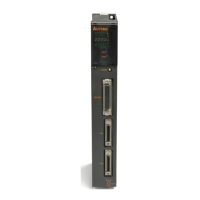
Do you have a question about the Mitsubishi A1SD75M3 and is the answer not in the manual?
| Model | A1SD75M3 |
|---|---|
| Type | Positioning Module |
| Input Voltage | 24 V DC |
| Number of Control Axes | 3 |
| Power Supply | 24 V DC |
| Weight | 0.3 kg |
| Control Method | Positioning Control |
Instructions for safe system design and implementation to prevent accidents.
Guidelines for proper installation of PLC and modules to ensure safety and prevent damage.
Critical safety instructions before connecting wires to the module.
Safety precautions for initial startup and routine maintenance procedures.
Important notes regarding safe operation and handling of the module.
Lists related manuals for comprehensive understanding of the product and its functions.
Covers the basic concepts, specifications, and functions of positioning control using AD75.
Explains the fundamental aspects of positioning control, including features and mechanisms.
Details the key features of the AD75 positioning module, such as SSCNET interface and absolute position system compatibility.
Illustrates the primary uses and application examples of positioning control in various industrial scenarios.
Explains how positioning control is executed using SSCNET, detailing the roles of software and hardware components.
Outlines the operational flow of the positioning system, covering design, preparation, operation, and maintenance phases.
Presents a comprehensive flowchart illustrating all processes involved in operating the AD75 positioning system.
Describes the step-by-step procedure for initiating various control functions, including main positioning and JOG operations.
Explains the different scenarios and processes for stopping the control operations under various conditions.
Details the procedure for restarting operations after a stop, particularly when a cause has occurred.
Provides a visual overview of the complete system, including AD75, PLC CPU, and peripheral devices.
Lists all necessary devices and components required for configuring the positioning system with the AD75.
Highlights essential precautions for system configuration, including mounting, version compatibility, and servo amplifier usage.
Provides a comprehensive list of the AD75's general specifications, including environmental and electrical characteristics.
Categorizes and explains the AD75's functions, including main, auxiliary, and common functions for positioning control.
Explains the primary control functions of the AD75, such as zero point return, main positioning, advanced positioning, and manual control.
Details the core functionalities of the AD75, including various position control methods and speed control features.
Details the input/output signals exchanged between the AD75 and the PLC CPU for system integration.
Covers the electrical specifications and signal layouts for interfaces with external devices like manual pulse generators.
Provides an overview of the procedures for installation, wiring, and maintenance, including crucial handling precautions.
Provides essential precautions for the physical installation of the AD75 module onto the base unit.
Details wiring precautions and procedures, emphasizing correct terminal arrangement and connection.
Explains how to confirm the correct installation and wiring through single module tests and servo startup checks.
Covers essential precautions for maintenance and correct product disposal procedures.
Details the different types of data used for positioning control, including parameters, positioning data, and control data.
Provides a comprehensive list of all parameters with their respective buffer memory addresses.
Outlines the basic parameters required for machine zero point return control, including methods and directions.
Lists and explains servo parameters specific to MR-H-B and MR-H-BN models for optimal control.
Provides servo parameters for MR-J2S-B, including optional functions and monitor modes.
Explains the structure and configuration of positioning data, detailing items from Da.1 to Da.9.
Details the configuration of start block data, covering shape, start data number, and special start commands.
Explains the configuration of condition data, including condition target, operator, and parameters for advanced positioning.
Lists and describes various monitor data items for checking system and axis operation states.
Details system control data and axis control data, used for managing clock settings and operational control.
Provides common precautions for writing data, programming with A0J2CPU, unusable commands, and FROM/TO command restrictions.
Lists all input/output devices, internal relays, and data registers used in sequence programs for AD75 control.
Explains the general configuration and specific operation programs for creating positioning control sequences.
Provides practical examples of sequence programs for parameter setting, positioning data, and zero point return.
Explains the details of specific programs like initialization, start details, and JOG operations.
Covers programs for zero point return request OFF and external start function validation.
Explains how to start control using positioning start signals or external start signals, including timing charts.
Explains the procedure and restrictions for restarting operations after a stop, especially concerning servo OFF states.
Details the process for stopping control operations under various causes like servo alarms, errors, or intentional stops.
Details the configuration and roles of the AD75's three memory types: buffer, flash ROM, and OS memory.
Provides a detailed breakdown of the AD75 buffer memory area configuration and writing possibilities.
Explains the data transmission processes between AD75 memories and external devices like PLC CPU and peripheral devices.
Provides an overview of zero point return control, including its two main types and the request flag management.
Details the operation outline and methods for machine zero point return, crucial for establishing a machine zero point.
Details the six available methods for establishing the machine zero point, based on configuration and application.
Explains the operation outline and precautions for the near-point dog method of zero point return.
Explains the operation outline and precautions for Count method 1), including handling cases where the zero point is not passed.
Explains the high-speed zero point return operation, which uses stored absolute positions for faster recovery.
Explains how to position to the zero point using 1-axis linear control (ABS) positioning data, often referred to as high-speed machine zero point return.
Provides an overview of main positioning controls, explaining how they use positioning data for various operations.
Lists the essential positioning data items required for configuring main positioning controls.
Explains the three operation patterns (Independent, Continuous, Continuous Path) for main positioning controls.
Describes the two methods for commanding positions: Absolute and Increment systems.
Guides users on setting positioning data for various main positioning controls, linking them to Da.2 Control method.
Explains 1-axis linear control, covering both ABS and INC linear modes with operation charts and data setting examples.
Details 2-axis linear interpolation control (ABS and INC), including operation charts and data setting examples.
Explains 1-axis fixed-dimension feed control, covering its operation chart and data setting examples.
Details 2-axis fixed-dimension feed control with interpolation, including operation charts.
Explains 2-axis circular interpolation with auxiliary point designation (ABS and INC arcs), including operation charts and restrictions.
Details 2-axis circular interpolation with center point designation (ABS and INC arcs), covering rotation directions and paths.
Explains speed control, including operation timing and precautions for current feed value management.
Details speed/position changeover control, explaining how to switch between modes and the associated operation timing.
Describes methods for changing the current value using positioning data or a start No., including operation charts and restrictions.
Explains the JUMP command for controlling operation flow by jumping to specific positioning data Nos. in continuous controls.
Introduces advanced positioning control, its data requirements, and types of applied controls.
Details the data required for advanced positioning control, specifically start block data and condition data.
Illustrates the configuration of start block data and condition data corresponding to block No. 7000 in the AD75 buffer memory.
Outlines the step-by-step procedure for executing advanced positioning control, from preparation to monitoring.
Explains how to set start block data, detailing its relation to various controls and providing setting examples.
Explains block start, where positioning data groups are executed sequentially via a single start command.
Details condition start, where execution depends on conditional judgments from condition data.
Describes simultaneous start, allowing execution of positioning data for multiple axes concurrently.
Explains how to stop control using start block data and the procedure for restarting.
Details repeated start using a FOR loop to execute a block of data a set number of times.
Explains repeated start using a FOR condition, repeating until specified conditions are met.
Guides on setting condition data, explaining its relation to various controls and providing setting examples.
Provides practical examples for setting condition data based on device status, buffer memory values, and axis designation.
Details how to create and execute a start program for advanced positioning control.
Introduces manual control, detailing JOG operation and manual pulse generator operation as two primary methods.
Details JOG operation, including its outline, execution procedure, parameter settings, and examples.
Outlines the step-by-step procedure for executing JOG operations, including parameter and sequence program setup.
Lists the essential parameters that must be set to perform JOG operation correctly.
Illustrates a JOG operation example, showing timing when a stop signal is active or when JOG start is pressed during test mode.
Explains manual pulse generator operation, detailing its outline, execution, parameters, and programs.
Outlines the step-by-step procedure for executing manual pulse generator operations.
Lists the essential parameters required for manual pulse generator operation.
Guides on creating sequence programs to enable or disable manual pulse generator operation, including necessary control data and start conditions.
Provides an overview of auxiliary functions, categorizing them by their role in compensating, limiting, or changing control details.
Details auxiliary functions specifically designed to enhance machine zero point return operations.
Explains the zero point return retry function, its operation, precautions, and parameter settings for improved reliability.
Explains functions like backlash compensation and electronic gear for improving control accuracy and system flexibility.
Details the backlash compensation function, its operation, precautions, and parameter settings for mechanical backlash.
Explains the electronic gear function for adjusting position/speed commands to match machine movement, including error compensation methods.
Describes the near pass mode function for suppressing mechanical vibration during continuous path control with interpolation.
Covers functions for limiting control operations, including speed, torque, and stroke limits for safety and protection.
Details the speed limit function, which caps command speed to prevent exceeding set limits.
Explains the torque limit function for preventing excessive torque generation and protecting the servomotor.
Describes the software stroke limit function for defining moveable ranges and preventing out-of-bounds commands.
Details the hardware stroke limit function, using physical limit switches to stop motion and prevent machine damage.
Explains how to control servo ON/OFF states for operability and safety, covering methods and conditions.
Covers functions that allow dynamic changes to control parameters like speed, override, and acceleration/deceleration times.
Explains the speed change function, allowing real-time adjustment of designated speeds during control execution.
Details the override function for changing command speed by a percentage for all controls.
Explains how to change acceleration/deceleration times dynamically during speed changes.
Describes the torque change function for modifying the torque limit value during operation.
Covers the function to restore absolute axis positions automatically upon AD75 power-on, eliminating manual zero point return after power failures.
Provides an overview of the absolute position restoration function and its system configuration.
Details how to switch between standard and infinite length modes for absolute position restoration.
Explains various other functions like step, skip, M code output, teaching, command in-position, and acceleration/deceleration processing.
Describes the step function used for confirming positioning control operations step-by-step, useful for debugging.
Explains the skip function that stops the current positioning and executes the next data upon signal input.
Details the M code output function for commanding auxiliary works related to positioning data execution.
Explains the teaching function for setting positioning addresses using manual control, useful for complex movements.
Covers the command in-position function that checks remaining distance and sets a flag upon reaching the stop position.
Explains how to adjust acceleration/deceleration processing to match control requirements for more precise movements.
Details the indirectly specification function for starting positioning data No. indirectly via buffer memory.
Provides an overview of common functions that are executed based on user requirements, such as parameter initialization and data backup.
Details the parameter initialization function, used to reset AD75 settings to factory defaults, especially after errors.
Explains the execution data backup function for storing current settings into flash ROM, preventing data loss during power failures.
Describes the LED display function for monitoring AD75 status, axis status, and signal status via the 17-segment and axis LEDs.
Explains the clock data function, which utilizes PLC CPU clock data for monitoring history data in 0.1-second units.
Details various types of errors and warnings, including AD75-detected and servo amplifier-detected issues.
Provides a comprehensive list of error codes detected by AD75, MR-H-B, MR-J-B, MR-J2-B, MR-J2S-B, and MR-J2-03B5 servo amplifiers.
Lists errors detected directly by the AD75 module, including fatal, common, and positioning operation errors.
Details errors detected by MR-H-B and MR-H-BN servo amplifiers, covering undervoltage, memory errors, and encoder issues.
Lists errors detected by MR-J-B servo amplifiers, including undervoltage, board errors, and motor combination errors.
Details errors detected by MR-J2-B servo amplifiers, covering undervoltage, memory errors, encoder issues, and ground faults.
Lists errors detected by MR-J2S-B servo amplifiers, including undervoltage, parameter errors, and overload conditions.
Details errors detected by MR-J2-03B5 servo amplifiers, covering undervoltage, motor errors, and communication issues.
Lists warnings detected by AD75 and various servo amplifiers, categorized by type and occurrence factor.
Lists warnings detected by the AD75 module, including FeRAM count, automatic update, and operation status warnings.
Details warnings detected by MR-H-B/MR-H-BN servo amplifiers, such as open battery cable and zero point setting warnings.
Lists warnings detected by MR-J-B servo amplifiers, including open battery cable and parameter warnings.
Details warnings detected by MR-J2-B servo amplifiers, such as open battery cable and zero point setting warnings.
Lists warnings detected by MR-J2S-B servo amplifiers, including overload and parameter warnings.
Details warnings detected by MR-J2-03B5 servo amplifiers, such as overload and parameter warnings.
Explains how start data is stored during error history and how it can be monitored.
Provides external dimension drawings for AD75M1/AD75M2/AD75M3 and A1SD75M1/A1SD75M2/A1SD75M3 modules.
Includes format sheets, such as the positioning module operation chart and parameter setting value entry tables.
Presents an operation chart for the positioning module, illustrating axis addresses and movement.
Provides tables for entering parameter setting values across different units like mm, inch, degree, and pulse.
Lists positioning data (No. 1 to 100) and corresponding buffer memory addresses for axis 1, 2, and 3.
Compares performance and functions between new and old versions of A1SD75M and AD75M models.
Explains fundamental positioning terms and concepts used in MELSEC systems, such as absolute encoders and trapezoidal control.
Offers troubleshooting guidance for common positioning control issues, including parameter errors and mechanical problems.
Provides a comprehensive list of buffer memory addresses and their corresponding items for AD75, covering various data types.


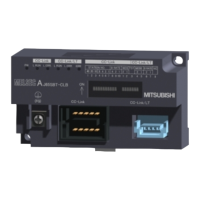

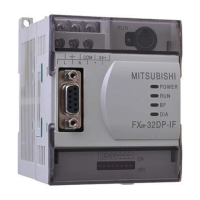
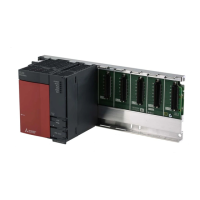
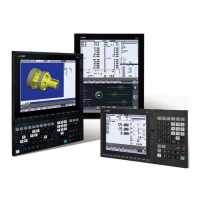
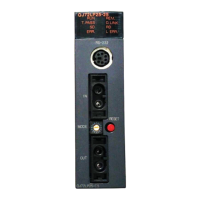
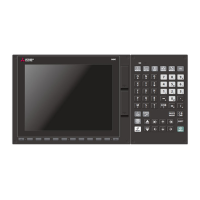
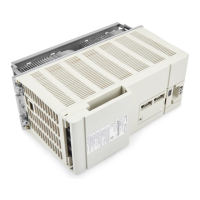
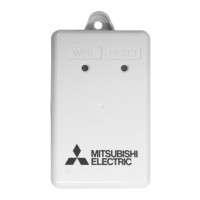
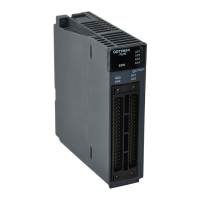
